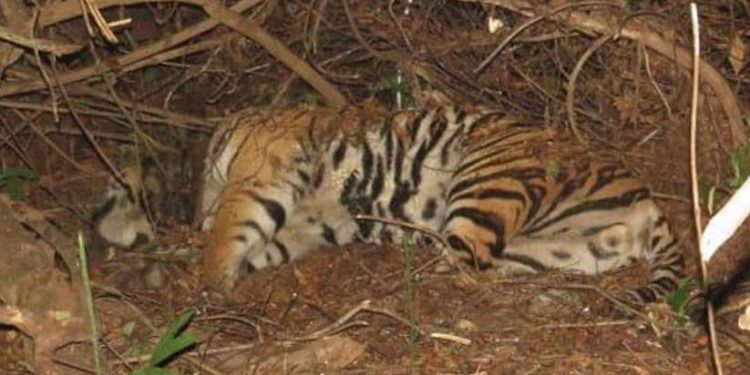Bantala: Satkosia sanctuary is one of 50 tiger conservation projects in the country.
But, the sanctuary is allegedly losing its significance due to lack of safety and management in the tiger conservation efforts. The ambitious tiger repopulation project in the sanctuary by way of relocation has not been successful. This has posed a question mark on the future of the sanctuary.
The forest department has not yet found out any plausible reason for the vanishing of tigers and failure of the repopulation effort. The tiger repopulation, which was launched in 1980, has flopped due to lack of coordination among the stakeholders from the government departments to local populace.
It was learnt that the forest and tourism departments have not really extended proper coordination in the matter of tiger conservation, hamlet relocation from inside the sanctuary and improvement in livelihood of locals.
It is worthy to mention that when tigress Sundari had killed a man, the department could not even arrange a vehicle and public address system to carry out awareness drive among the people.
At that time, a group, keeping in mind the elections, had reportedly opposed the tiger repopulation effort. As a result, the forest department could not take right step in this direction.
Besides, there was a note of discord among the officials from the top to the bottom level.
Two years ago, the state government had welcomed a tiger and a tigress – Mahavir and Sundari – under India’s first inter-state tiger relocation project. In the summer of 2018, the tiger Mahavir was relocated from Panna Tiger Reserve in Madhya Pradesh to the Satkosia. A few days later, tigress Sundari was also sent to Satkosia from MP’s Bandhavgarh. Mahavir died some months later. At that time, the department could not properly probe into the real cause of its death.
In December last year, the National Tiger Conservation Authority had asked the Odisha government to send back Sundari from Satkosia and accused the forest and wildlife department of making a mess of the monitoring and management of the relocated tigress.
It was said that though shifting of the tigress has been delayed due to the COVID-19 pandemic, the National Tiger Conservation Authority would begin the process in a month after assessing the situation.
In 2004, the department’s census had put the number of tigers in Satkosia at 18 while the number of leopard was 32.
Sadly, these big cats were found to have vanished over the years, but the department has no answer as to how they disappeared.
In 2009, a tigress was shot at by poachers. It died while being treated at Nandankanan Zoological Park. One had escaped from Satkosia and intruded into Nandankanan.
The sad part is that the department is clueless about what happened to the 16 other tigers.
It was learnt that tigers have survived in 18 states in the country while their population has increased in 12 states. Worryingly, their population has sharply plummeted in six states, including Odisha.
Big cat population has declined in two tiger projects in Odisha. The situation in Satkosia is disheartening.
Given the lush green environment and ecology of Satkosia, then Union Environment Minister Kamal Nath had proposed for tiger conservation and biosphere projects.
Though Satkosia hosts a perfect setting for tiger conservation, lacunae in conservation efforts, management and coordination among all stakeholders – community, line departments, political leaders, conservationists, researchers, experts and social activists — have been real culprits for its failure.
Some experts observed that there is need for formation of an advisory committee for Satkosia sanctuary, annual review meetings on tiger conservation efforts, formation of a district-level committee to look after ecotourism boost and formation of forums for Vana Surakhya Samitis.
PNN







































